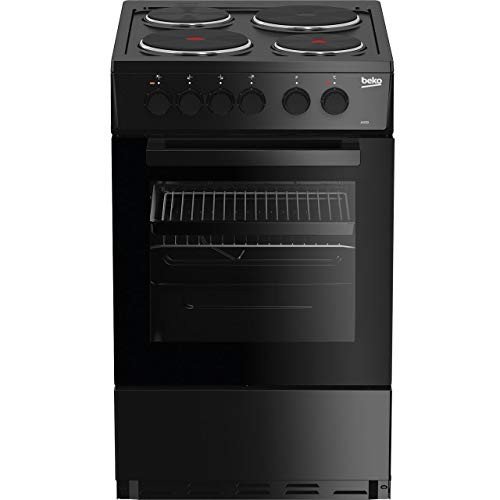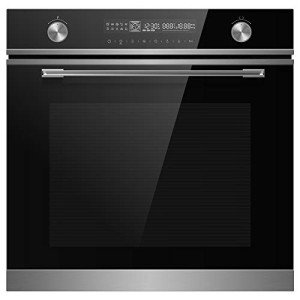Ovens hobs are a vital kitchen appliance, but it can be tricky to choose which one is best for you. Whether you're looking for electric, gas or induction hobs, we'll help you make the right choice.
The domino hobs come in a variety of styles including ceramic and induction. They offer a versatile experience when it comes to cooking. Choose from either one or two heat zones and mix your model to suit you; for instance, a ceramic section with a separate gas section.
 Gas
GasA gas hob is a vital kitchen appliance, providing numerous benefits for both professional and casual cooks alike. This type of hob is renowned for its speed and versatility. It utilizes propane or natural gas to create a fire that heats pots and pans. The design of a gas hob typically has several burners that can be controlled via a knob that allows you to alter the flame's intensity and temperature. This degree of control makes a gas cooker an ideal option for cooking techniques that require delicate control like boiling and simmering.
Furthermore, a gas hob's sleek design makes for a sophisticated kitchen design, and its flat surface makes it easy to clean. Gas hobs are great for counters with smaller spaces because they don't protrude. Gas hobs have a few disadvantages. They require a LPG (liquefied Petroleum Gas) pipeline, and an exclusive fuel supply, which can increase the cost of installation.
Gas stoves were designed with safety as the top priority. They are fitted with flame failure devices that automatically shut off gas supply when the flame goes out. This feature is essential for households with pets or young children, as it protects against carbon monoxide poisoning as well as fire. Modern hobs are also equipped with automatic shut-offs that stop the flow of gas in case there is an unexpected electrical surge or short circuit.
If you are considering purchasing gas hobs, make sure to speak with a Gas Safe registered fitter to ensure that the installation process is handled correctly and that your stove adheres to all safety guidelines. If you attempt to install or repair the gas hob by yourself, it could cause fire hazards, leaks, and health risks.
Therefore, it is important to consider the long-term cost of a hob before making a final purchase. For example, an electric hob may be more efficient than a gas one, because it directs heat to your cookware. In addition, many electricity-based hobs come with additional features such as automatic shut-off and pan detection that make them safer to use than their counterparts.
Induction
While gas and traditional electric cooktops heat through conduction (which is a hot burner that warms the surface of your pan or pot) Induction makes use of electromagnetism to directly heat only the cooking pan. Induction cooktops are able to get hotter quicker, more precisely and efficiently. This also means less energy is wasted since heat is transferred by the magnetic field to the pan instead of an energized resistance coil.
It can be a challenge to master induction stoves first. Induction stoves require cookware with flat bottoms and ferromagnetic properties. Most newer kitchenware is compatible, but older pots and pans might not work unless you use an interface disk for induction. The interface disk is placed on top of your existing cookware and creates an elongated magnetic surface that allows the burner to communicate with it. Induction cooktops are not as hot to your hands as traditional electric or gas cooktops, but they can burn your hand if you sit too long on the surface.
Another drawback is that the cooking surface is unable to be turned on if the cookware isn't seated on it as a safety measure to keep fires from igniting and burning. Induction burners aren't able to be accidentally turned on while a pan is cooling. This isn't possible with a gas or electric stove.
The good news is that induction ranges don't release harmful toxins into the air when they're shut off, including nitrous oxides, carbon monoxide and formaldehyde. These pollutants can exacerbate respiratory conditions. Induction cookers are totally emission-free when they're paired with renewable energy sources.
The one downside is that induction cooktops can emit a buzzing noise. This noise is noticeable at higher temperatures and can cause interference with digital meat thermometers. However you can lessen it by using heavy pans with flat bottoms. The hum isn't a problem, but it can be irritating for some cooks. Many appliance stores have showroom or loaner kitchens which you can test the induction cooktop prior to buying.
Ceramic
Electric ceramic cookers are the most common kind of cooker in UK kitchens. They are flush with the worktop, and are covered in glass to give them a sleek and modern appearance. They are also easy-to-clean. They have a flat surface, therefore there are no crevices where food can be stuck. A simple wipe is all that's needed. They come with a range of safety features like hot indicators that indicate that the zones are hot and locks which prevent children from using them.
The cookware or pan is heated electronically by passing electricity through the coiled elements underneath the tempered glass. They aren't as energy efficient as gas or induction but offer an affordable and easy method to cook. They are susceptible to scratching when pots and pans are dragged across the surface but they do come with shatterproof safety glass.
The flat surface of the ceramic oven's hob makes it easier to heat up and cool down quickly as the heat is transferred through the cookware instead of the entire hob. This makes them more convenient to use in a hectic household. Ceramic hobs are also more expensive, but are worth it due to their design and convenience.
It is essential to keep in mind that no matter what kind of hob you pick, it should be based on your personal cooking preferences and lifestyle needs. If you need high precision speed, energy efficiency and speed then gas or induction hobs may be better for you. Before you decide on the kind of hob that you wish to buy, it is important to take into consideration your budget and the cookware you currently have. Once you've done this, then you can begin looking for the perfect new stove to complement your oven. Our experts are ready to answer any questions you may have. You can reach us by phone or email or visit one of our stores. We offer a large selection of kitchen products to help you design your dream kitchen.
Halogen
There's something incredibly satisfying about the moment you bring a halogen oven in the kitchen, and watching your food quickly cook underneath its glowing lid. It's a type of dry-heat cooking, meaning that it heats the food or air to high temperatures, and a halogen oven can reach these temperatures much more quickly than conventional ovens, often in just minutes.
They are also more flexible to temperature changes, making them suitable for all styles of cooking. They are great for frying, roasting and baking however, they can also be used to steam and steam. Some models are even capable of infrared grilling, without the smoke and mess of charcoal.
As well as being relatively fast to start heating an oven made of halogen is also a lot quicker than a conventional oven at reaching the temperature at which it is most efficient and the power will shut off once it reaches the temperature, therefore there's no risk of overheating. The lid is designed to hold heat well to distribute it evenly, and frying food to perfection.
 Halogen ovens are typically less expensive than traditional ovens and are available for less than PS40. They can be used for everything from frying to steaming, and some models even come with a rotisserie function. A lot of models come with glass dishes that lets you check the food more easily and stops it from burning.
Halogen ovens are typically less expensive than traditional ovens and are available for less than PS40. They can be used for everything from frying to steaming, and some models even come with a rotisserie function. A lot of models come with glass dishes that lets you check the food more easily and stops it from burning.Halogen ovens come with some drawbacks. For example bulbs may have to be replaced after a specific time. Some models also come with flimsy stands for the oven, and they can be easily knocked over by pets or children.
Halogen ovens also generate certain harmful byproducts during heating. These are known as 'process pollutants which include acrylamide, polycyclic aromatic hydrocarbons (PAHs) and heterocyclic amines (HCAs) and can cause cancer in humans. If you follow the directions and use a non-stick pot and oven, you can significantly lower the risk. These risks are usually highlighted on the warning label of halogen ovens. It is important to read it carefully before using this appliance.



